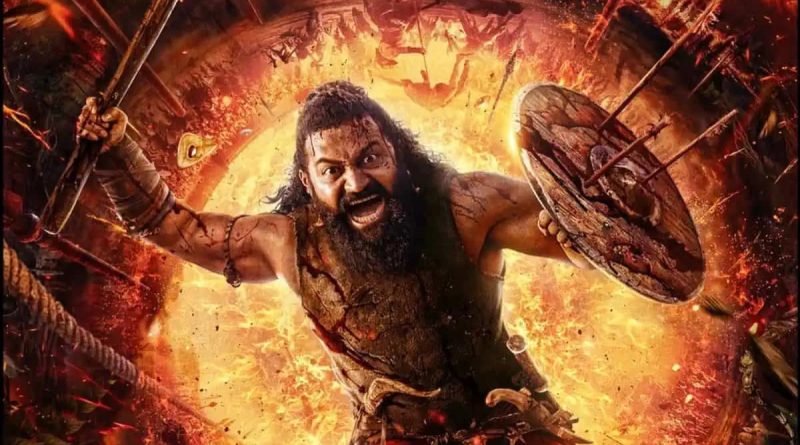Kantara Chapter 1 Movie Review – A Spectacular Yet Uneven Prequel That Dazzles With Scale
Introduction – The Return of Kantara’s World
When Kantara (2022) released, it took the nation by storm with its rustic storytelling, divine possession sequences, and deeply rooted cultural essence. Now, director Rishab Shetty returns with Kantara Chapter 1, a prequel that ambitiously expands the cinematic universe. With a runtime of 168 minutes, the movie attempts to trace the origins of the folklore, spirituality, and daivas (holy spirits) that form the backbone of the Tulunadu culture. While the film delivers jaw-dropping visuals and breathtaking moments, it also suffers from uneven pacing and overindulgence in spectacle.
Plot Overview – Berme’s Fight for His People
The Importance of Business and Identity
In a small but defining moment, Berme (Rishab Shetty) tells his mother about the importance of business—not merely as a means of livelihood, but as a marker of identity and dignity for his marginalized community. This decision becomes symbolic of a larger revolt for justice and rights.
Clash Between Tribals and Royals
The story once again centers around the mystical forest of Kantara, this time during the Kadamba dynasty. The royals eye Eshwarana Hoothota (God’s Garden), a sacred forest land that belongs to the indigenous community. The clash is not just about territory but also about prestige, with Kulasekhara (Gulshan Devaiah) and Berme locking horns in a high-stakes battle.
Themes of Power, Prestige, and Land
Unlike the first installment, where greed was the central motivator, Kantara Chapter 1 explores how ego, pride, and cultural dominance fuel oppression. The struggle between the tribals and the royals highlights the timeless fight for inclusivity and identity.
Character Performances and Impact
Rishab Shetty as Berme – The Goofy Yet Fearless Rebel
Rishab Shetty shines once again, portraying Berme as a man who balances eccentricity with fierce determination. His transition into divine possession is raw, powerful, and haunting.
Gulshan Devaiah as Kulasekhara – A Loose Cannon Prince
Kulasekhara is portrayed as unpredictable, arrogant, and dangerously volatile. Devaiah’s performance elevates the antagonist, making him one of the film’s strongest assets.
Rukmini Vasanth’s Strong Presence
Rukmini Vasanth, remembered for her roles in Sapta Sagaradaache Ello, delivers an emotionally charged performance that adds balance to the male-dominated narrative.
Technical Brilliance – Cinematography, Music, and CGI
Arvind Kashyap’s Grand Visuals
Cinematographer Arvind Kashyap transforms Kantara Chapter 1 into a visual spectacle. From the grandeur of battlefields to the intimacy of tribal life, every frame feels cinematic.
Ajaneesh Loknath’s Rousing Music and Songs
The soundtrack is one of the film’s strongest pillars. The Brahmakalasha song carries divine intensity, while Rebel pumps adrenaline into the war sequences.
Action Sequences – Chariot Fights and Epic Battles
The action set-pieces, especially the chariot sequence, are choreographed with flair. While they occasionally lean into showboating, they undeniably leave a mark.
Strengths of Kantara Chapter 1
- Immersive world-building that feels authentic to Tulunadu’s roots.
- Spectacle-heavy visuals with top-notch CGI.
- Cultural representation through costumes, sets, and folklore.
Weaknesses and Criticisms
- Abrupt editing choices that affect narrative flow.
- Overuse of humor in tense moments weakens impact.
- Slightly hollow emotional core compared to the first film.
Folklore and Spiritual Undertones
Origin of Daivas and Tulunadu Beliefs
One of the key promises of Kantara Chapter 1 was to explore the origins of daivas. While the film touches upon these elements, the balance between mythology and cinematic spectacle feels uneven.
Divine Possession and Cultural Representation
Rishab Shetty’s performance during the possession sequences continues to be a highlight, paying homage to the cultural traditions of the region.
Comparison with the First Kantara (2022)
- Kantara (2022): Soulful, tightly written, and emotionally resonant.
- Kantara Chapter 1 (2025): Bigger, grander, but slightly less grounded.
Audience Reception and Critical Response
The audience has largely embraced the film’s grandeur and spectacle, with particular praise for the cinematography and music. However, critics have pointed out pacing issues and lack of emotional depth when compared to the original.
FAQs about Kantara Chapter 1
Q1. Is Kantara Chapter 1 a direct sequel or prequel?
It’s a prequel, exploring events that took place before Kantara (2022).
Q2. What is the runtime of Kantara Chapter 1?
The film runs for 168 minutes.
Q3. Who are the main cast members of Kantara Chapter 1?
Rishab Shetty, Rukmini Vasanth, Gulshan Devaiah, Jayaram, and Rakesh Poojary.
Q4. Does the film explore the origins of daivas?
Yes, but while it touches upon folklore and spirituality, it doesn’t fully delve into it as expected.
Q5. How does it compare to the first Kantara?
It’s much grander visually but lacks the emotional intensity of the original.
Q6. Is Kantara Chapter 1 worth watching in theatres?
Absolutely. The visuals and sound design make it a film best experienced on the big screen.
Conclusion – A Grand Yet Uneven Prequel That Entertains
Kantara Chapter 1 is a daring attempt by Rishab Shetty to expand the cultural and cinematic universe he created. With dazzling cinematography, powerful performances, and breathtaking sequences, the film achieves greatness in parts. However, it occasionally falters with pacing and emotional depth. Despite its flaws, the movie remains a must-watch spectacle, especially for fans of folklore-driven storytelling and large-scale cinema.




